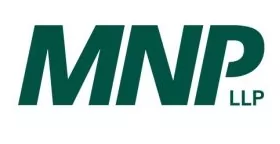Many Americans living in the U.S., Canada and other countries hold Canadian retirement accounts. The IRS recently changed the reporting requirements for these clients.
Affected accounts include:
- RRSPs,
- RRIFs,
- Locked-in Retirement Accounts (LIRAs),
- Life Income Funds (LIFs), and
- Locked-in Retirement Income Fund (LRIFs).
Old rules
The U.S. treats these plans as grantor trusts by default. This means the contributor is able to get back money he or she put in without it being considered taxable income. It's a little more complicated for a spousal plan, but the result's the same.
With a grantor trust, the plan is viewed like any other account. So, income and gains earned inside the plan are taxable to the individual as they are earned. This is known as the current-income approach.
Two problems can arise.
1. For Canadian purposes, income earned inside the plan is
tax-deferred until it's withdrawn. The U.S. timing doesn't
match, meaning it's possible the U.S. foreign tax credit
mechanism won't work. That means it's easy to get double
taxed.
2. The default reporting of these plans (using Forms 3520 and
3520-A) is complicated and time-consuming.
The solution was to elect to defer U.S. recognition of the income earned inside the plan until withdrawal (that's possible under the Canada-U.S. tax treaty). Since 2004, individuals have been able to file Form 8891 to make the election, which is much less work than the old 3520/A (these forms were made inapplicable for this purpose more than a decade ago). The downside is that it's historically been necessary to make the election, which means filing the forms. Many people didn't think to do this, believing that doing nothing yielded the same result.
Deferral: the new default
The IRS has essentially reversed the default treatment. In general, taxpayers will be considered to have made the treaty election for deferral, unless they opt out, and they no longer need to file Form 8891. But not everyone falls into this category. To be eligible for the new treatment, a U.S. person must have:
1. filed a U.S. tax return for each year (presumably, complying
with the streamlined filing procedure is sufficient);
2. not reported undistributed earnings on any of those returns;
and
3. reported previous distributions (if there were any) as though
he or she had made the treaty election.
One great thing about the new rules is that they apply retroactively. If a taxpayer meets the above criteria, she gets deferral treatment back to the first date it would have applied, meaning when she made the contribution or when she became a U.S. person—whichever came last.
Continuation requirement
Once a taxpayer is using the deferral approach, she must get the IRS's permission to switch to the current-taxation approach. However, if she doesn't meet the eligibility requirements for the deferral approach, she's stuck with the current approach unless she gets permission to change from the IRS.
Record-keeping challenge
Because contributions are non-deductible for U.S. purposes, it's important to track them. The U.S.-taxable amount of withdrawals will be different than the Canadian amount. This requirement hasn't changed. If it's missed, then 100% of the withdrawals will be taxable.
Foreign reporting
Clients are still required to report foreign (non-U.S.) financial accounts and assets. When the client doesn't file Form 8891, the balance in the plan must be reported on Form 8938, assuming the total assets are above the filing threshold.
The content of this article is intended to provide a general guide to the subject matter. Specialist advice should be sought about your specific circumstances.

